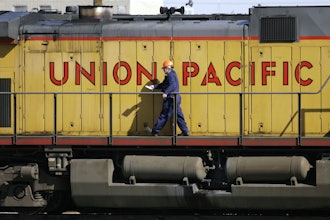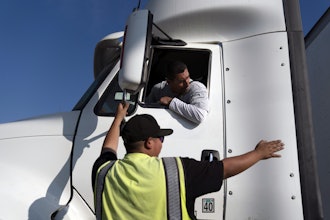
Reports of spiking COVID-19 cases and related fatalities have been met with recent news of extremely promising vaccines developed by Pfizer and Moderna. With the two offerings promising 90 and 95 percent effectiveness against the virus, respectively, attention now turns to mass production and, more importantly, mass distribution.
According to Anna Nagurney, Ph.D., Director of the Virtual Center for Supernetworks and professor at the Department of Operations and Information Management at the University of Massachusetts, distribution is where the biggest challenges lie.
First, The Not-So-Good-News
She states that while nearly all research was subsidized with government funds, and similar promises have been made regarding production, little has been discussed on the distribution front. This leaves huge questions about:
- Transporting vaccines that must be stored at extremely cold temperatures (Pfizer requires storage at -94 degrees Fahrenheit; Moderna at -4 degrees F). This means power outages in hospitals and clinics would need to be avoided at all costs, and while backup generators are a no-brainer at most locations in the U.S., considerations have to be made for geographies with less reliable power grids. Not only does temperature control limit waste, but it ensures ongoing product quality, which will be key in upholding the public’s confidence about the vaccine’s effectiveness. A lapse in temperature impacts the efficacy of the vaccine. And if it doesn’t perform, people will be less likely to go through the process of getting it, which could be an initial challenge any way due to ...
- Distribution and production patterns that will need to account for a second injection that must take place 3-6 weeks after the first shot. This will simultaneously place a unique strain on planning for production, storage and last mile delivery.
- Supporting the increased human resources (pilots, truck drivers and medical personnel) and the expanded amount of PPE and packaging they will need in order to safely transport the vaccines to hospitals and clinics.
- Ensuring that high-value products like these vaccines are kept in a safe and secure location. This security will need to extend from the manufacturing plant, through delivery and storage, and include the hospital or clinic.
- Managing all of these unique factors when the product will undoubtedly have to be transferred between several modes of transportation (i.e., truck to plane and back to a truck for delivery) – all while avoiding any vaccine spoilage.
According to Nagurney, the Centers for Disease Control and the Department of Homeland Security are looking to lean heavily on Irving, Texas-based McKeeson Corporation when it comes to figuring out the distribution side of things. The $231-billion healthcare distributor not only has a strong track record in pharmaceutical supply chain management, but can bring its 80,000 global employees to the effort.
Nagurney feels a great deal of the distribution pattern will depend on a population’s proximity to the vaccine production site. This could lead to a lot of direct selling from manufacturers to healthcare providers in rural areas, and in countries with under-developed healthcare networks. It remains to be seen what kind of role retailers like CVS, Walgreens and others will play.
In addition to complex supply chain challenges, effective distribution of these vaccines will rely on a number of technologies that are commonplace to industrial engineers, but might be new to some logistics and medical supply personnel. Nagurney feels that advanced temperature and quality control sensors, and related equipment, will be vital in preserving the integrity of the vaccines during transport.
This will not only involve investing in the right equipment, but ensuring that those with critical logistics roles are capable of monitoring, troubleshooting and testing this equipment in providing a rapid response if anything even appears to be malfunctioning. These individuals will also need a thorough understanding of what the data being presented by the equipment means in terms of impact on product quality.
Nagurney states that all of these challenges could come to a head very quickly without additional funding. A great deal of the research and production costs associated with COVID-19 pharmaceuticals either was or will be subsidized by governments around the world. Support at the same level has yet to be formalized for logistics and storage.
Nagurney is also not aware of any pricing model for vaccines. So, if healthcare providers and pharmaceutical companies are charged with funding last-mile efforts, it’s safe to assume that those costs will somehow need to be covered.
The Good News
While Nagurney seemingly paints a picture resembling the Twelve Labors of Hercules in crossing the pandemic finish line, there is good news. The most important of which is that there are now actual products to work with in designing effective supply chain solutions. The news from Pfizer and Moderna means logistics providers like UPS, the aforementioned McKeeson, DHL, FedEx and others know what is needed and can invest and plan accordingly.
The same can be said for major hospitals, healthcare provider networks and all levels of government. The key, according to Nagurney, will be cooperation that begins at the top and runs throughout the entire supply chain. This includes government cooperation from the federal level down to the smallest municipality, and industry support from production through delivery – even amongst competitors.
Helping to simplify the initial stages of distribution, Nagurney sees an almost uniform understanding that front line workers, i.e. medical staff, first responders, etc. will be the first to receive the vaccine. They will be followed by the elderly and those with pre-existing conditions that make them more susceptible to the virus. Healthy adults would most likely be among the last to receive it.
Despite her concerns about the current supply chain tools that are in place, Nagurney is confident that those with key roles will be ready and are more than capable of delivering. They just need to start putting plans in motion.
First-hand knowledge of the manufacturing and supply chain sectors would lead me to believe her. Just as manufacturers switched from cars to ventilators, dental tools to test kits and furniture to face masks, the smart bet would be for these continued evolutions to occur in championing this common, vital cause.






















